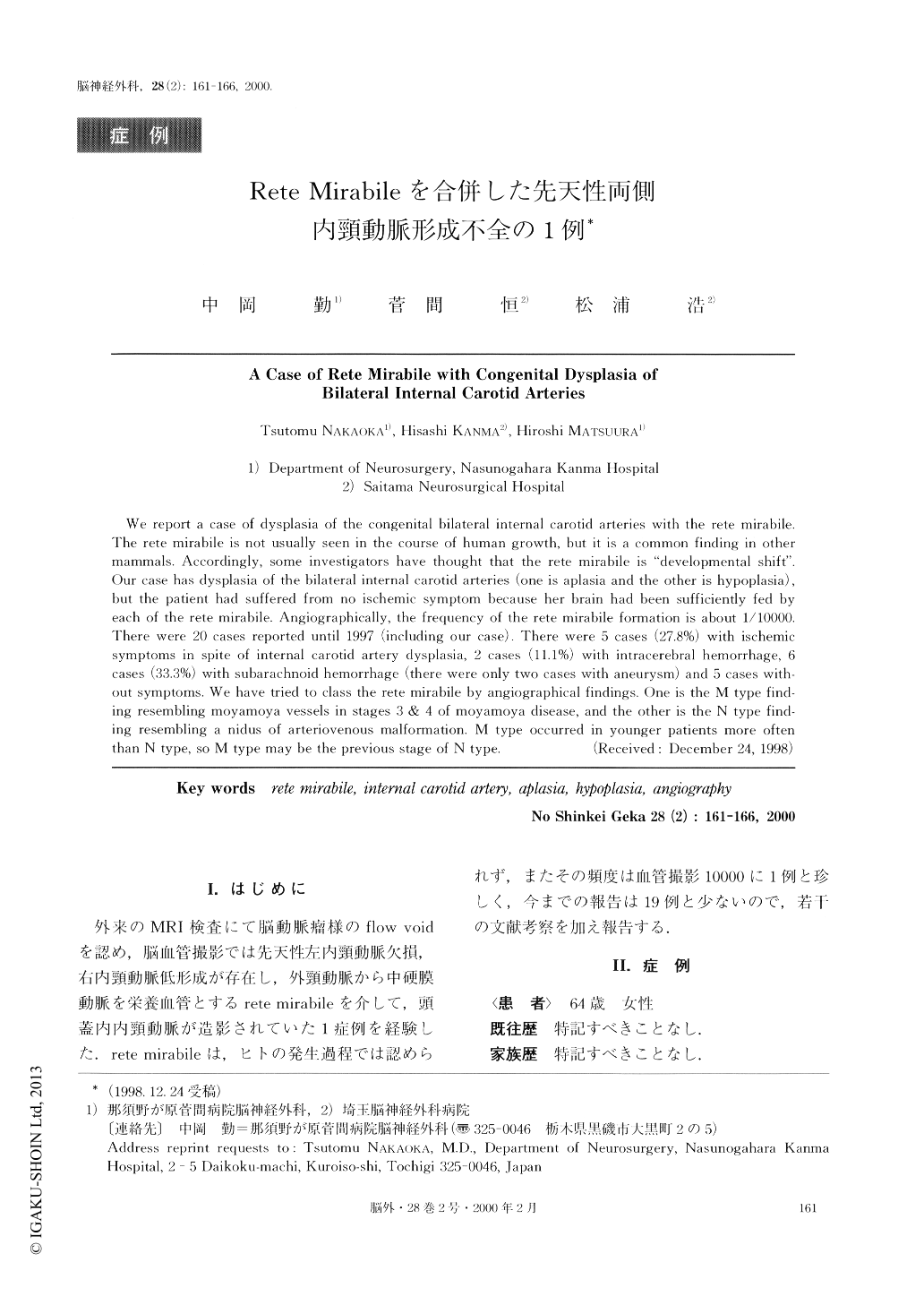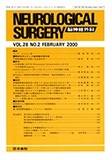Japanese
English
- 有料閲覧
- Abstract 文献概要
- 1ページ目 Look Inside
I.はじめに
外来のMRI検査にて脳動脈瘤様のflow voidを認め,脳血管撮影では先天性左内頸動脈欠損,右内頸動脈低形成が存在し,外頸動脈から中硬膜動脈を栄養血管とするrete mirabileを介して,頭蓋内内頸動脈が造影されていた1症例を経験した.rete mirabileは,ヒトの発生過程では認められず,またその頻度は血管撮影10000に1例と珍しく,今までの報告は19例と少ないので,若干の文献考察を加え報告する.
We report a case of dysplasia of the congenital bilateral internal carotid arteries with the rete mirabile. The rete mirabile is not usually seen in the course of human growth, but it is a common finding in other mammals. Accordingly, some investigators have thought that the rete mirabile is “developmental shift”. Our case has dysplasia of the bilateral internal carotid arteries (one is aplasia and the other is hypoplasia), but the patient had suffered from no ischemic symptom because her brain had been sufficiently fed by each of the rete mirabile. Angiographically, the frequency of the rete mirabile formation is about 1/10000. There were 20 cases reported until 1997 (including our case). There were 5 cases (27.8%) with ischemic symptoms in spite of internal carotid artery dysplasia, 2 cases (11.1%) with intracerebral hemorrhage, 6 cases (33.3%) with subarachnoid hemorrhage (there were only two cases with aneurysm) and 5 cases with-out symptoms. We have tried to class the rete mirabile by angiographical findings. One is the M type find-ing resembling moyamoya vessels in stages 3 & 4 of moyamoya disease, and the other is the N type find-ing resembling a nidus of arteriovenous malformation. M type occurred in younger patients more often than N type, so M type may be the previous stage of N type.

Copyright © 2000, Igaku-Shoin Ltd. All rights reserved.


